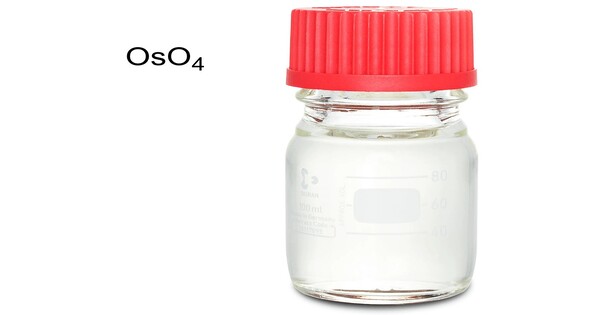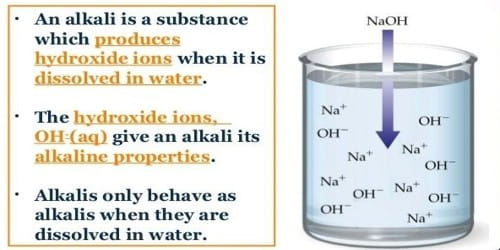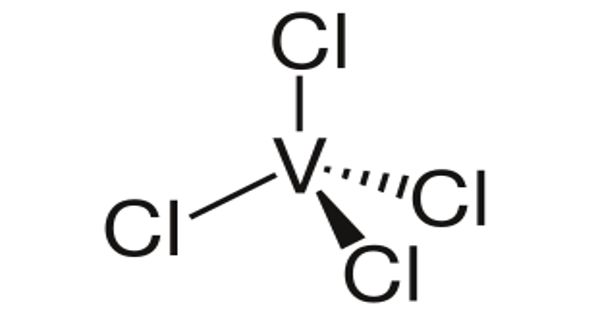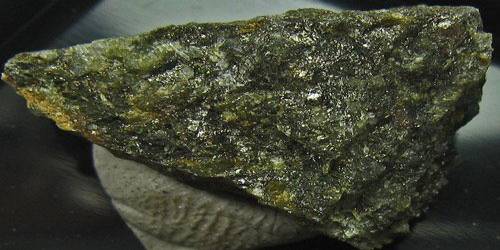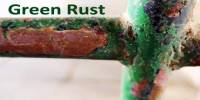Osmium tetroxide (also osmium(VIII) oxide) is the chemical compound with the formula OsO4. It is a highly reactive and toxic compound of osmium, a dense and rare metal. It is a volatile, colorless to pale yellow solid that has a strong, pungent odor. The compound is noteworthy for its many uses, despite its toxicity and the rarity of osmium.
Osmium tetroxide is primarily used in a variety of applications in the fields of chemistry and biology. It also has a number of unusual properties, one being that the solid is volatile. The compound is colourless, but most samples appear yellow. This is most likely due to the presence of the impurity OsO2, which is yellow-brown in colour. In biology, its property of binding to lipids has made it a widely-used stain in electron microscopy.
Physical properties
Osmium(VIII) oxide forms monoclinic crystals. It has a characteristic acrid chlorine-like odor. The element name osmium is derived from osme, Greek for odor. OsO4 is volatile: it sublimes at room temperature. It is soluble in a wide range of organic solvents. It is moderately soluble in water, with which it reacts reversibly to form osmic acid (see below). Pure osmium(VIII) oxide is probably colourless; it has been suggested that its yellow hue is attributable due to osmium dioxide (OsO2) impurities. The osmium tetroxide molecule is tetrahedral and therefore nonpolar. This nonpolarity helps OsO4 penetrate charged cell membranes.
- Chemical formula: OsO4
- Molar mass: 254.23 g/mol
- Appearance: White volatile solid
- Odor: Acrid, chlorine-like
- Density: 4.9 g/cm3
- Melting point: 40.25 °C (104.45 °F; 313.40 K)
- Boiling point: 129.7 °C (265.5 °F; 402.8 K)
- Solubility in water: 5.70 g/100 mL (10 °C), 6.23 g/100 mL (25 °C)
Preparation
Osmium tetroxide can be synthesized by oxidizing osmium metal with oxygen or ozone:
2𝑂𝑠+5𝑂2→2𝑂𝑠𝑂4
Alternatively, it can be produced by oxidation of osmium compounds like osmium dioxide (OsO₂) with reagents like potassium permanganate (KMnO₄).
Uses
- Electron Microscopy (EM): Osmium tetroxide is widely used as a fixative in electron microscopy. It is employed to preserve biological samples, particularly to stain cellular membranes due to its ability to bind to lipids and proteins. This staining enhances contrast in electron micrographs.
- Organic Synthesis: It is used as an oxidizing agent in organic chemistry, especially in reactions involving alkenes. A notable reaction is the osmium-catalyzed dihydroxylation, where it is used to add two hydroxyl groups across the double bond of alkenes to form diols.
- Staining in Histology: In histology, osmium tetroxide is used to fix and stain tissue samples for examination under a microscope.
- Forensic Science: It is sometimes used in fingerprinting because it can react with fatty acids and oils present in fingerprints.
Toxicity and Safety
- Toxicity: Osmium tetroxide is extremely toxic and poses significant health risks. It can cause severe irritation to the skin, eyes, and respiratory system, and inhalation of its vapors can lead to lung damage, or even death in severe cases. Its toxicity is due to its ability to oxidize biological tissues and form highly reactive compounds.
- Corrosive: It is corrosive to metals and many other materials, and its vapors can also damage the eyes and mucous membranes.
- Handling: Osmium tetroxide should be handled with extreme care in a well-ventilated fume hood, and proper personal protective equipment (PPE) like gloves, goggles, and lab coats should always be worn. It should only be used by trained individuals in controlled environments.
